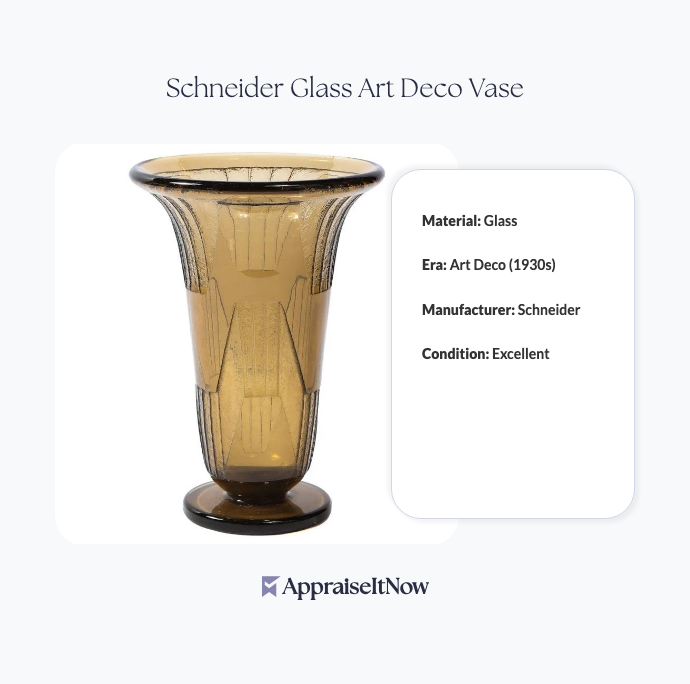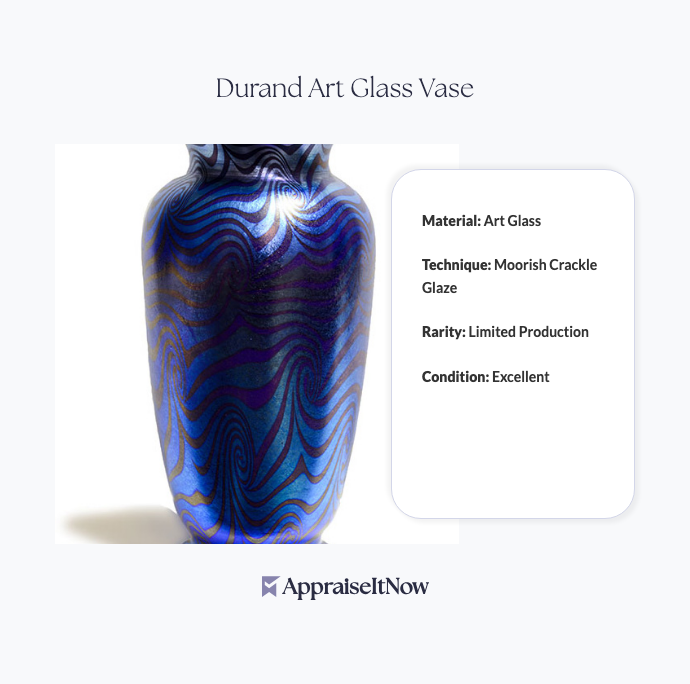<h1>How to Get Your Tiffany Studios Peony Lamp 16 Inch Appraised</h1>
<p>The Tiffany Studios Peony Lamp 16 Inch stands as one of the most coveted pieces of Art Nouveau lighting, with current market values between <strong>$20,000 and $30,000</strong> for quality examples. Whether you've inherited this masterpiece, discovered it at an estate sale, or are considering purchasing one, obtaining a professional appraisal is essential to understanding its true worth and protecting your investment.</p>
<h2>Understanding Your Tiffany Studios Peony Lamp's Value</h2>
<p>This exquisite lamp represents far more than functional lighting—it embodies decades of craftsmanship, historical significance, and collector demand. First introduced in the 1900s, the Peony design showcases the hallmark qualities that make Tiffany Studios lamps among the most sought-after pieces in the <a href="/types/antique-artwork">antique lighting and decorative arts</a> market.</p>
<p>Your 16-inch lamp features a domed shade composed of individual leaded glass panels carefully arranged to depict delicate peony petals in soft, naturalistic colors. The metal base and framework, typically crafted from bronze or similar materials, demonstrate the expert metalworking that distinguished Tiffany Studios from lesser competitors. This combination of technical mastery and artistic vision drives the strong collector interest and consistent market appreciation for these lamps.</p>
<div class="callout tip"><p><strong>Value Driver</strong></p>
<p>Authentic Tiffany Studios lamps appreciate steadily over time, with documented examples regularly achieving strong returns compared to standard <a href="/types/personal-property">personal property</a> investments.</p></div>
<h2>Determining Authenticity: A Critical First Step</h2>
<p>Before investing time and money into a full appraisal, understanding whether your Peony lamp is genuinely produced by Tiffany Studios separates authentic investments from reproductions. How do you know if your lamp is worth money? The answer lies in several identifying markers that professional appraisers examine.</p>
<p><strong>Authentic Tiffany Studios signatures</strong> appear on both the glass shade and metal base. The shade typically bears the mark "Tiffany Studios New York" impressed or applied to one of the glass segments, while the bronze base carries foundry markings or serial numbers. However, signature placement varies depending on production run, requiring expert knowledge to authenticate properly.</p>
<p>Construction quality provides another authenticity indicator. Real Tiffany lamps feature hand-soldered lead came connecting each glass piece—you can observe individual solder joints creating distinctive patterns. The glass itself displays authentic variations in color and opacity that mass-produced reproductions fail to replicate. Additionally, the weight and patina of authentic bronze bases differ noticeably from modern castings.</p>
<div class="callout note"><p><strong>Authenticity Consideration</strong></p>
<p>Many skilled reproductions exist today, and distinguishing them from originals requires the expertise of certified appraisers familiar with Tiffany Studios production methods and historical records.</p></div>
<h2>What Makes a Peony Lamp Valuable</h2>
<p>The Peony design holds special significance within the Tiffany Studios catalog. What is the most valuable Tiffany lamp? While certain water lily and wisteria designs command higher prices, the Peony lamp ranks among the most prized for several reasons. The intricate petal arrangements require more labor-intensive glass cutting and fitting than many competing designs. The botanical accuracy appeals to collectors seeking artistic merit alongside decorative value.</p>
<p>The 16-inch size occupies a particularly desirable market position. Smaller lamps (12 inches or less) command lower values due to less impressive presence, while larger models exceed 20 inches and may overwhelm typical residential spaces. Your 16-inch dimension represents the sweet spot for collectors balancing visual impact with practical interior design integration.</p>
<p>Consider these value factors when evaluating your specific lamp:</p>
<ul>
<li><strong>Glass condition</strong>: Cracks, chips, or repairs significantly reduce value</li>
<li><strong>Lead came integrity</strong>: Corrosion or separation between glass panels indicates structural compromise</li>
<li><strong>Base patina</strong>: Original bronze aging is preferred over aggressive cleaning or refinishing</li>
<li><strong>Shade-to-base matching</strong>: Original factory pairings command premiums over later assemblies</li>
</ul>
<h2>Market Trends and Collector Demand</h2>
<p>How much can you get for your Tiffany lamp? Current market conditions reveal sustained collector interest despite broader economic fluctuations. The decorative <a href="/types/antique-furniture">antique artwork</a> market, which includes lighting pieces, has shown remarkable resilience, particularly for items meeting museum-quality standards.</p>
<p>Is there a market for Tiffany lamps? Absolutely. Auction houses specializing in fine <a href="/types/memorabilia-and-collectibles">memorabilia and collectibles</a> regularly feature Tiffany lamps in major sales events. Sotheby's and Christie's maintain dedicated departments for Tiffany Studios pieces, with recent sales demonstrating strong price realization. Private collectors actively seek authenticated examples, and interior designers command premium prices for genuine Tiffany pieces in high-end residential projects.</p>
<p>Recent market data shows Peony lamps in excellent condition consistently achieving 85-95% of pre-sale estimates, indicating accurate market valuation and strong buyer conviction. This differs from speculative collecting categories where results often fall below estimates.</p>
<div class="callout tip"><p><strong>Market Insight</strong></p>
<p>Tiffany Studios lamps from the early production period (1900-1920) typically appreciate faster than later reproductions, making timing and authenticity critical investment factors.</p></div>
<h2>The Difference Between Authentic and Tiffany-Style Lamps</h2>
<p>What's the difference between a Tiffany lamp and a Tiffany style lamp? This distinction directly impacts value by potentially $15,000-$25,000 or more. Authentic Tiffany Studios lamps were manufactured by the company founded by Louis Comfort Tiffany, operating from their Queens factory from 1902 until its closure in 1938. These represent the original works with full historical and artistic significance.</p>
<p>Tiffany-style lamps, by contrast, are later reproductions inspired by Tiffany design principles but manufactured by other companies or artisans. While quality Tiffany-style pieces have merit and appeal, they lack the investment potential and collectibility of authenticated Tiffany Studios originals. Some reproductions date back 50+ years and have developed their own collectible status, but pricing reflects the distinction clearly.</p>
<p>An experienced appraiser conducting a thorough condition and <a href="/blog/what-do-appraisers-look-for-when-appraising-antique-artwork">authenticity assessment</a> can definitively classify your lamp, removing uncertainty from your valuation process.</p>
<h2>How Does Tiffany Lamp Value Fluctuate?</h2>
<p>Understanding value dynamics helps you time appraisals appropriately for insurance, sale, or estate purposes. How does the value of Tiffany lamps fluctuate? Market cycles for decorative <a href="/types/antiques">antiques</a> typically follow broader economic indicators, though Tiffany pieces demonstrate less volatility than more speculative collectible categories.</p>
<p>Market factors affecting your Peony lamp's value include:</p>
<ul>
<li><strong>Economic conditions</strong>: Discretionary luxury purchases decline during recessions but recover steadily</li>
<li><strong>Design trend cycles</strong>: Art Nouveau appreciation cycles through periods of heightened collector focus</li>
<li><strong>Auction result publicity</strong>: Major sales at auction houses influence comparable valuations</li>
<li><strong>Collection dispersals</strong>: Estate liquidations create supply fluctuations affecting market prices</li>
</ul>
<p>Professional appraisers track these market trends continuously, ensuring your valuation reflects current collector demand rather than historical pricing. An appraisal conducted five years ago may significantly understate your lamp's current market position.</p>
<div class="callout note"><p><strong>Timing Consideration</strong></p>
<p>Obtaining updated appraisals every 3-5 years ensures your insurance coverage and documented valuations remain aligned with current market conditions.</p></div>
<h2>Finding a Qualified Appraiser for Your Tiffany Lamp</h2>
<p>Where can I get a Tiffany lamp appraised? Professional appraisers specializing in <a href="/blog/appraising-fine-glass-and-crystal-valuing-delicate-glassware-and-artistic-creations">fine glass and crystal</a> and decorative arts can provide certified valuations. However, Tiffany Studios lamps require appraiser expertise beyond general antique knowledge. Look for professionals with demonstrated experience appraising similar pieces and familiarity with authenticated Tiffany production records.</p>
<p><strong>Credentialed appraisers</strong> affiliated with organizations like the American Society of Appraisers (ASA), International Society of Appraisers (ISA), or American Antique Appraiser Association (AAPAA) maintain professional standards and ethics codes essential for reliable valuations. AppraiseItNow connects you with certified appraisers across the United States who specialize in decorative arts and historical lighting pieces.</p>
<p>Your appraiser should conduct in-person examination of your lamp, not rely on photographs alone. A thorough appraisal includes:</p>
<ul>
<li><strong>Detailed condition documentation</strong> with high-resolution photography</li>
<li><strong>Authenticity verification</strong> examining signatures, construction methods, and materials</li>
<li><strong>Comparable sales analysis</strong> identifying recently sold examples with similar features</li>
<li><strong>USPAP-compliant reporting</strong> meeting insurance company and legal standards</li>
</ul>
<h2>Identifying Marking and Signature Locations</h2>
<p>Where is a Tiffany lamp marked? Understanding signature placement helps you verify authenticity yourself. The glass shade typically displays "Tiffany Studios New York" impressed into one or more glass segments, often on a section less visible when the lamp is displayed. Some earlier examples bear the mark only on the metal framework.</p>
<p>The bronze base frequently carries a "Tiffany Studios" foundry mark along with numerical identifications. Some bases include patent dates referencing Tiffany innovations. The quality of these markings differs substantially from modern forgeries, which often appear hastily applied rather than integral to the manufacturing process.</p>
<p>Professional examination using magnification and ultraviolet lighting reveals marking details invisible to casual inspection, confirming authenticity factors that justify your lamp's valuation.</p>
<h2>Appraisal Documentation and Its Value</h2>
<p>A certified appraisal provides essential documentation beyond simple price estimation. Whether you're insuring your Peony lamp, planning estate distribution, or preparing for sale, professional appraisal reports establish legally defensible valuations supported by comparable sales analysis and condition assessment.</p>
<p>Insurance companies require detailed appraisals for coverage above standard homeowner policy limits. Estate attorneys utilize certified appraisals for tax valuation and equitable beneficiary distribution. Auction houses reference professional appraisals when establishing pre-sale estimates. These practical applications make professional appraisal investment essential for significant <a href="/blog/understanding-artwork-appraisals">decorative arts collections</a>.</p>
<p>The appraisal process itself often reveals undocumented details about your lamp's history, manufacturing specifics, or design variations that enhance your appreciation of this historical object beyond its monetary value.</p>
<div class="callout note"><p><strong>Key Takeaway</strong></p>
<p>A professional appraisal of your Tiffany Studios Peony Lamp 16 Inch provides accurate market valuation ($20,000-$30,000 range for authenticated examples), essential documentation for insurance and estate purposes, and expert verification of authenticity that protects your investment and ensures proper stewardship of this remarkable Art Nouveau masterpiece.</p></div>







.avif)







